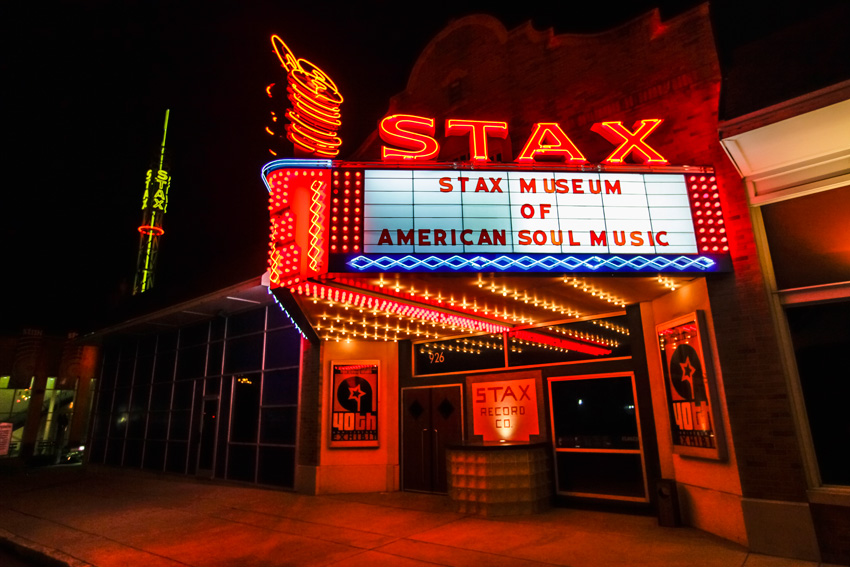For centuries, music has united the Black community, and nowhere is this more evident than Memphis.
As seen in Toronto Star
The energy is electric as the crowd sways from side to side, one voice singing to the rhymes and heavy beats that pulse through the auditorium. I’m chanting at the top of my lungs, cheeks hurting from smiling, my body warm from the excitement you feel when you’re part of something bigger than you.
On this hot August night, I’m in Memphis, Tenn., at Trap Karaoke, a touring interactive concert experience that focuses on trap music, a sub-genre of hip-hop that originated in the South in the 1990s. The crowd is almost entirely African American, and it’s this cultural connection that makes events like this so popular. Trap music is about the struggles of Southern Black life, reflective of a moment in time, a social temperature captured through lyrics and a hi-hat.
For centuries, music has united the Black community, and nowhere is this more evident than Memphis. From the guiding songs of enslaved Africans along the Underground Railroad to the blues of famed Beale Street to the politically charged songs from Soulsville’s Stax Records, music has expressed a collective cultural voice, and that’s still true in the city today.
The next morning, I visit Slave Haven, a 19th-century-house-turned-museum that was once a stop on the Underground Railroad. The small, white antebellum home was built in 1849 just outside Memphis, which was a popular destination for buying and selling slaves. I sit with museum director Elaine Lee Turner, a well-known civil rights advocate, in a small room at the front of the house. The bright space is filled with artifacts: maps of the South, news clipping of lynchings, pictures of sharecropper cabins, and pews from an old Black church.
“We used to have drums to talk to one another. But when the slave owners realized we could communicate with drums, they took them away. So we sang,” explains Turner. “We sang ‘call and response’ songs in the fields to know we weren’t alone. We sang to plan our escapes to freedom.” She begins a low, familiar hum and gestures for me to join in. I do and together we sing “Swing Low, Sweet Chariot,” exchanging a knowing smile.
Before I leave, Turner guides me toward a trap door and down into a cold, dark cellar. “This is where slaves hid while they waited to move North,” she tells me. “They could be in here for two days or two weeks — no one knew.” She turns off the naked bulb, and we sit in blackness and heavy silence. The songs of the enslaved echo in my head.
In the afternoon, I head to famous Beale Street, a three-block stretch of downtown Memphis awash with dancing neon lights, “happy hour” signs, and colourful windows crammed with kitschy souvenirs. It is only 3 o’clock, but already live music fills the street, and punters are ordering patio drinks in the hot Southern sun. Almost every bar advertises a band, proof that this place continues to produce entertainment unlike anywhere else.
Beale Street claims the title of “Home of the Blues” and was declared a National Historic Landmark in 1966. Blues music has roots in the Deep South as an evolution of the spirituals and the African American “call and response” work songs of the enslaved. The melancholic twang and mournful lyrics of blues music have always reflected the struggle of Black America, and in the early 20th century, it found a home on Beale Street.
Tributes to the legends who performed here are everywhere: vibrant murals, historic venue posters and vivid graffiti celebrate the genius of blues artists like B.B. King, W.C. Handy and Muddy Waters. Their soulful collection of stories, sorrows and songs continues to resonate along the street; as I watch the crowds grow, it’s clear many people still journey here to connect with the sounds of a classic era.
My final stop in Memphis is the Stax Museum of American Soul Music. Before this museum was built in 2003, this land housed the Stax Records studio, where greats like Otis Redding, Isaac Hayes and the Staple Singers recorded the prominent hits that made up my childhood soundtrack. I’m buzzing with excitement as I approach the brightly lit red and blue marquee proudly displaying “Soulsville, USA” in neon letters.
Inside, shiny cases of instruments, music memorabilia and live recordings guide me through a history of Memphis soul from 1957 to 1976. Like other genres of Black music born in the South, soul is a vibrant mixture of gospel, rhythm and blues, and the familiar “call and response” element. These songs are anthems of Black pride, respect and strength.
“Black people were really proud of Stax because Memphis had a heartbeat when Stax was happening,” songwriter Homer Banks explained in “Soulsville, U.S.A.: The Story of Stax Records,” a book by historian Rob Bowman. “Black people saw something visual that was a real success right in their community.”
During the civil rights movement of the 1950s and ’60s, Stax Records’ music became a medium for political messages against injustice and oppression. In 1968, when Martin Luther King Jr. was assassinated near the recording studio, riots ensued across the city. The music that followed was raw and gritty, a rallying cry that reflected the struggle within Memphis and all Black America.
When it feels like there is nothing else, in Memphis there is song. It’s fitting that musical calls for freedom and respect were born in an area infamous for its history of slavery and segregation. Here, the evolution of music has mirrored Black culture within the city, the Deep South and beyond. To gauge the American social climate, look to music, and look to Memphis.
Natalie Preddie travelled as a guest of Memphis Tourism, which did not review or approve this article.


